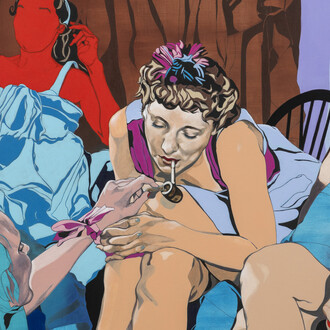Photography not only chronicles the passage of time, impermanence, and the ageing of people and things, but photographs themselves are uniquely impermanent objects.
Stedelijk Museum Amsterdam presents Forever Young?, an exhibition that explores the relationship between photography and transience, from 30 March to 12 August. Spread out over five galleries, the presentation spotlights photographs that portray impermanence, and those that are themselves showing signs of age. The exhibition also looks at photography that plays with the suggestion of ageing, and artworks in which the combination of photography and other media can create conservation issues.
The museum treats photographic objects in particular with extreme care, especially in the case of color photography, and artworks that combine photography with other materials. Despite being stored in carefully controlled conditions, early color photographs specifically have a tendency to redden over time, and the separate components in mixed media works sometimes age at different rates. Restoration is possible but only to a limited degree, and new digital editing and printing techniques can replace older analogue prints. However, these possibilities raise questions and dilemmas for everyone involved.
An example of this complicated issue is Russian Diplomacy (1974) by Ger van Elk, in which the photograph is partly overpainted using acrylic paint. This paint has different qualities to the carrier, in addition to which, the materials are also mutually reactive. As a consequence of the varying ageing processes, the work looks different now to when it was made, and the original color relationships have been disrupted. In the exhibition Van Elk's work C'est moi qui fais la musique (1973) is also on show. Two prints of the work are on view: one the original, discolored airbrushed montage, and the other version remade by Van Elk himself in the early 2000s, using digital techniques.
This presentation accompanies the project ‘Photographs and Preservation. How to Save Photographic Works for the Future?’, part of the Science4Arts program, financed by the Netherlands Organisation for Scientific Research (NWO). The University of Leiden is supervising three PhD research projects in the context of the program.
















